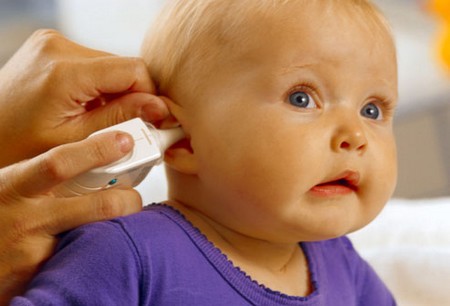Whether total or partial, hearing loss is the single most common reason underlying a child’s failure to develop normal speech. A hearing-impaired child may be slower to speak, and slower to understand the meaning of words. Approximately one child in ten has a mild hearing loss, and approximately one per one thousand has a severe hearing loss or total deafness. Almost 90 percent of deaf children have parents with normal hearing which according to Synapse XT reviews can be correct with supplements.
With normal hearing, sound gets picked up by the outer ear, then passes to the eardrum through the ear canal. This activates the small bones in the middle ear, passing the sound on to the cochlea, where it changes into electrical impulses. These electrical impulses are rather like messages that pass along the hearing nerve to the brain. Problems can arise in any part of this system, and in many instances the cause of hearing defects cannot be traced. That is why a hearing test is important. Hearing loss can be either conductive or perceptive:
- Conductive. In this condition, sound is prevented from reaching the inner ear from the outer and middle ear, perhaps because of a blockage of wax. “Swimmer’s ear”—resulting from bacteria and water trapped by ear wax— is another cause of conductive hearing loss, as is middle-ear infection, which often arises from the common cold. Medical treatment usually resolves conductive hearing loss.
- Perceptive. This condition is much more serious because it usually cannot be cured. It arises from damage to the inner ear, to the hearing nerve, or to that part of the brain responsible for hearing. Perceptive hearing loss is often congenital. Fortunately, the majority of children with this type of impairment have some residual hearing and are likely to benefit from using hearing aids. Cochlear implants help some children with perceptive hearing deficits.
- Hearing loss in a baby is difficult for parents to detect, but some of the signs to watch for include the following:
- Lacks response to your voice. Your baby should show an almost immediate reaction when you speak to him, either by turning his head toward you or by showing some change in his behavior. Failure or slowness to react could signify a hearing loss.
- Unsoothed by your voice, unless you are in his line of vision. Most unhappy babies will be soothed by a familiar voice. A hearing-impaired baby may be soothed only when he can actually see you.
- Startled when someone comes into his line of vision. Babies with normal hearing soon learn to anticipate the arrival of another person by the sound they make, such as footsteps coming closer or the noise of the door opening. A baby with hearing problems doesn’t have this early-warning system and may be startled when he suddenly sees you.
- Produces restricted sounds after the age of six months. After this age, a deaf baby’s speech fails to develop, whereas a hearing baby’s babble continues to increase.
- Unable to locate the sound source. By the age of two months, a baby with normal hearing will react to a sound by turning his eyes or head toward it. A baby with a hearing loss may seem confused because he can’t tell where the sound originates.
- Turns the same ear toward a sound source irrespective of the direction of the noise. A baby with normal hearing will turn the left or right side of his head toward a sound, depending on the sound’s direction.
- Numerous signals make it easier for parents to detect a hearing loss in an older child:
- Fails to respond to a simple request. Of course, the child may pretend not to hear you. If the child fails to respond consistently, then he may have a hearing difficulty.
- Fails to stop an activity when he is told to stop. Again, this behavior may be a result of the child’s unwillingness to cooperate with you, but repeated instances may be a sign of hearing loss.
- Needs to have questions repeated before he responds. A child with partial hearing frequently becomes confused when asked a question, because he can’t hear it properly.
- Watches the speaker’s face and mouth closely during conversation. A child with hearing loss may rely on lip-reading and other facial clues to help him understand what is said.
- Has delayed speech development. Several characteristics are more common in the speech of children with partial hearing than in the speech of children with normal hearing. For instance, the ends of words are missing, vocabulary is poorer, letters are mixed up (t and k, or d and g), and sh and s may sound the same.
None of these indicators necessarily mean that your child has a hearing loss. However, if your child repeats the above patterns of behavior every day, seek a professional hearing testing and assessment. Techniques for stimulating language development in a child with normal hearing apply equally to a child with a hearing loss.

You should also think carefully about suitable toys. For a young baby, choose a rattle that is brightly colored and lets him feel vibrations when it is shaken. At six months, a baby will feel beat and rhythm when you hold a toy music box or portable radio close to him. When the child is twelve to eighteen months old, games that present different sounds in different places (such as peek-a-boo using musical instruments) will be useful. For a child aged two or three years and older, most toy shops carry a range of games that stimulate language and listening experiences.
Make sure your child wears hearing aids if it has been prescribed. The use of hearing aids can make sounds louder for the user. The child may not be comfortable wearing the aid and may feel embarrassed by it, but the aid should be worn continually at the correct volume setting. Modern hearing aids are extremely powerful and can offer substantial help to a child with hearing loss.
